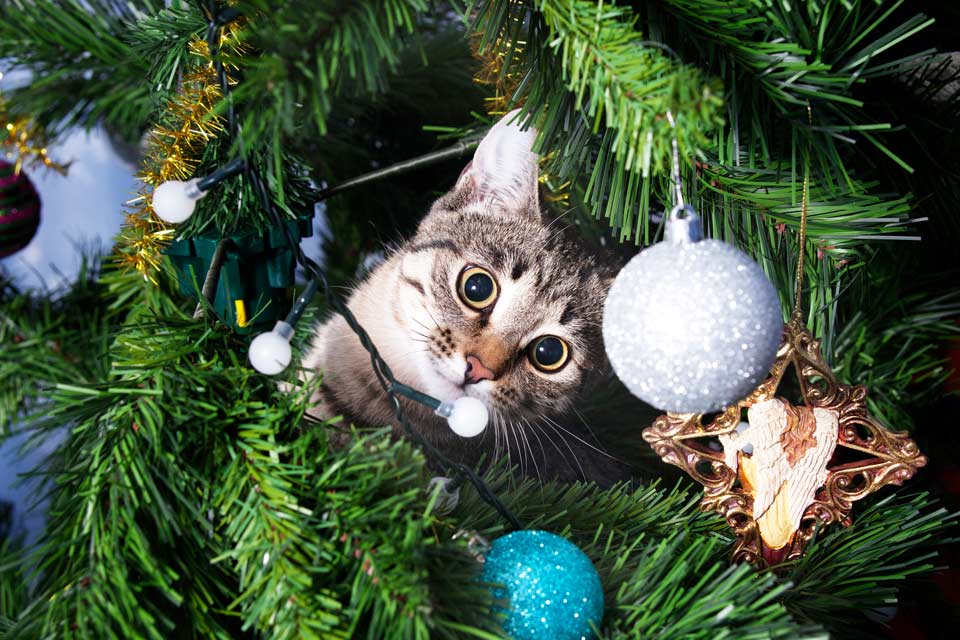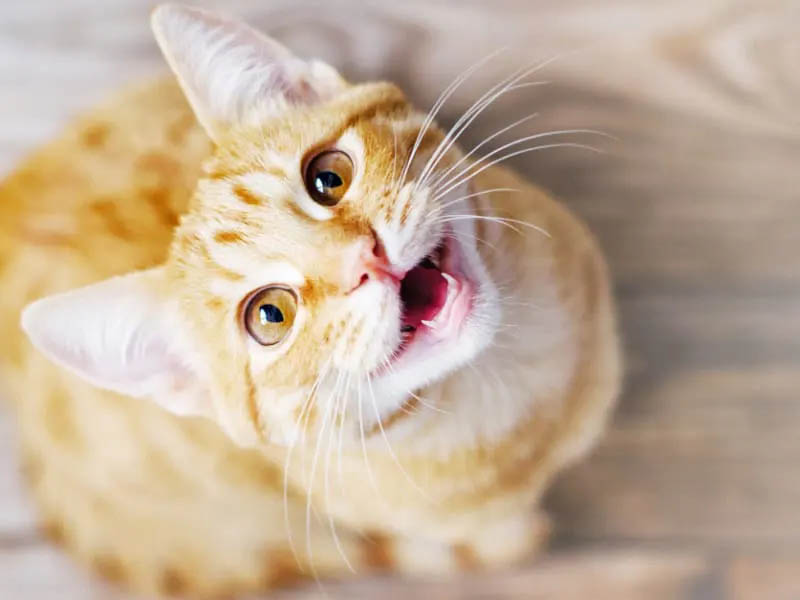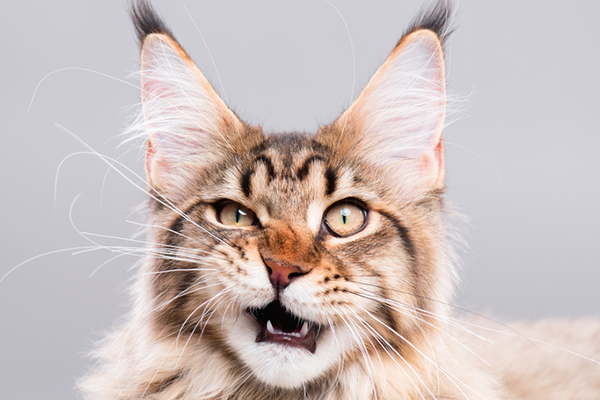
Ever wonder why your cat is so drawn to the Christmas tree each year?
It’s the perfect scenario, in your cat's mind. The Christmas tree is something high to climb on that provides plenty of hiding spots and has all sorts of fun, shiny, moving things to bat at and play with.
However, this isn’t the safest spot for your cat, nor is it your preferred spot for them to hang out.
There are dangerous things that can be chewed on and potentially ingested by your cat, like the tinsel, branches and pine needles, ornaments, and Christmas lights. Swallowing any of these could be a choking hazard and potentially cause an intestinal blockage.
How to Cat-Proof Your Christmas Tree
Is it possible to have both cats and a Christmas tree during the holidays with no incidents? Yes—it just might take a little planning and rearranging. Here are some ideas for how to keep your cat out of your Christmas tree this holiday season.
Try Cat-Deterrent Sprays
Keep your cat away from the Christmas tree with a cat-deterrent spray.
Cats absolutely hate the taste of bitter things. This is an evolutionary trait that has probably kept them safe from eating things like rancid meat in the wild. Thankfully, it can also keep them from destroying things in the house or chewing on toxic plants. If you use a bitter-tasting spray on the tree, it can help keep your cat from chewing on the branches.
DIY Cat-Deterrent Spray
You can make your own homemade cat-deterrent spray by following the instructions below.
Ingredients:
Steps:
Boil water.
Add fresh rosemary to boiling water. Turn off heat, cover with a lid, and let it steep overnight.
The next day, strain the rosemary pieces out of the liquid with a cheesecloth or a sieve. Pour the liquid into a spray bottle.
Add vinegar and lemon juice.
Shake well to mix up the liquids.
Let an Air-Spray Can Do the Work
Try a motion- or heat-activated spray to warn your cat to stay away. These types of sprays are harmless to your cat but scare them away because of the startling burst of air.
The motion-activated sprays make a hissing sound as they release air. This will also startle your cat because it simulates the sound a cat makes when they feel threatened. This is how they tell possible aggressors to stay away. If your cat hears that same sound, they will learn to stay away.
Using a motion- or heat-activated spray is recommended instead of spraying your cat with water. If you try deterring your cat by spraying them with a water bottle yourself, the cat will associate you with fear. Plus, if you aren’t patrolling the tree 24/7, it just teaches them to get into the tree when you aren’t around.
Use Cat Training Mats
Place a cat training mat in front of your Christmas tree. They are made to be safe to use and won’t hurt your cat. These products typically offer two settings—tonal and static—sometimes simultaneously. These settings are used to startle your cat, which will train them to stay away.
Set Up a Physical Barrier
Keep your cat away from the Christmas tree with a physical barrier like a pet fence or pet playpen. But for cats who are extra clever and determined, you may want to combine this with another method like the cat-deterrent spray.
Place Aluminum Foil around the Base
Many cats absolutely hate the look, sound, and feel of aluminum foil. So, if you want a quick, easy fix to keep your cat away from the tree, create a sort of Christmas tree skirt with sheets of aluminum foil taped together around the base.
Move Furniture Away from the Tree
Cats are quite athletic, and they love to jump from one piece of furniture to the next. If you move as much furniture as you can away from the Christmas tree, your cat won’t have that extra launching point.
Get Your Cat Their Own Cat Tree
You can try to lead your cat away from the Christmas tree by offering them something more desirable. If you get your cat a new cat tree with some special added features and catnip, it could be tempting enough to draw their attention away from the Christmas tree. Get cat tee here.
Downsize to a Tabletop Christmas Tree
If you’re tired of trying to keep your cat out of the tree, go for a smaller Christmas tree that can sit on top of a table. This way the tree isn’t big enough for your cat to jump onto or climb around in.
Featured image: https://cdn10.bigcommerce.com/
Featured article at: petmd.com





































































































